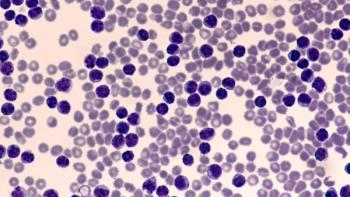
Targeted α-Particle Radioligand Therapy Shows Promising Activity, Low Toxicity in SSTR2-Positive Neuroendocrine Tumors
Thor Halfdanarson, MD, discussed early results showing favorable response rates and manageable safety with ^212Pb-VMT-α-NET, along with the role of PET imaging in optimizing patient selection for future trials.
At the European Society of Medical Oncology (ESMO) Congress 2025, new data on ^212Pb-VMT-α-NET, a targeted α-particle radioligand therapy from Perspective Therapeutics, highlighted promising anti-tumor activity and favorable tolerability in patients with somatostatin receptor 2-positive (SSTR2+) neuroendocrine tumors (NETs).
In this interview with Pharmacy Times, Thor Halfdanarson, MD, discusses the early efficacy results, how ^212Pb-VMT-α-NET compares with ß-particle therapies such as lutetium, and how imaging biomarkers may guide future patient selection in this theranostic program.
Q: Could you summarize the observed anti-tumor activity and how you interpret that in the context of prior therapies for somatostatin receptor 2–positive (SSTR2+) neuroendocrine tumors (NETs)?
Thor Halfdanarson, MD: These were radioligand-naive patients—important to point that out. This was not radioligand retreatment, but these were patients who had received different treatments in the past, including somatostatin analog therapy, chemotherapy, or targeted therapy.
The objective responses we observed are actually promising. If you compare this to what we have for beta-particle therapy like lutetium, it seems to compare favorably. Again, these are small numbers and early data, but at least the observed objective response rate compares very favorably.
Q: How do you see ^212Pb-VMT-α-NET fitting into or differentiating from existing or emerging somatostatin receptor–targeted therapies or radionuclide therapies?
Halfdanarson: I think with the higher response rates—and especially if these responses are durable, as they seem to be, although we don’t yet have long-term follow-up—I believe this will be an excellent treatment option for patients with somatostatin receptor–expressing neuroendocrine tumors.
This includes well-differentiated grade 1, grade 2, and grade 3 disease. We’ll have to see how duration of response varies by grade group. But in terms of low toxicity and high response rate, I think this compares very favorably with other radioligand approaches.
Q: Since the program is described as “theranostic,” how do you envision integrating imaging biomarkers or companion diagnostics to optimize patient selection, dosimetry, or response monitoring in future trials?
Halfdanarson: All patients with well-differentiated NETs should undergo assessment of somatostatin receptor expression. We know that the vast majority—probably more than 95% of patients with gastrointestinal or small bowel NETs—express somatostatin receptors, as do about 90% or more of pancreatic NETs, but far fewer of lung NETs.
All of these patients should be tested for receptor expression using appropriate PET imaging—whether copper-64, gallium-68, or something of a similar nature. That’s the diagnostic part of the theranostic pair. Patients need to be assessed for receptor expression to determine if they are suitable candidates for radioligand therapy targeting that receptor. If the receptor is not expressed, then we should look at other treatment options.
Newsletter
Stay informed on drug updates, treatment guidelines, and pharmacy practice trends—subscribe to Pharmacy Times for weekly clinical insights.




















































































































































































































